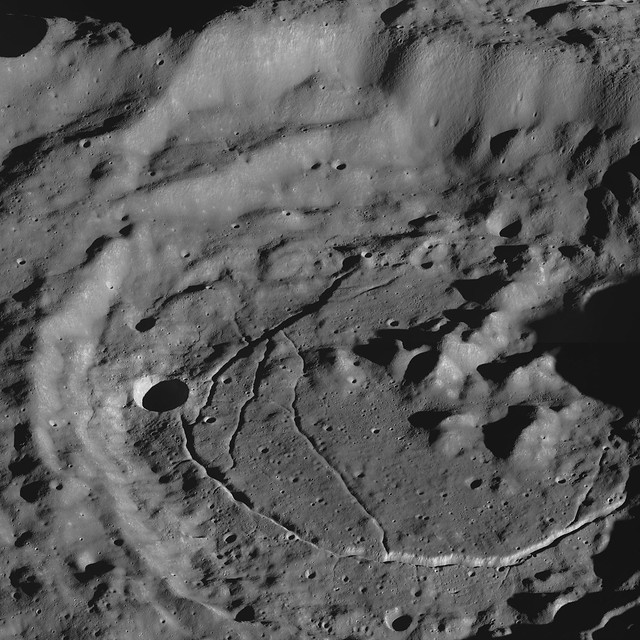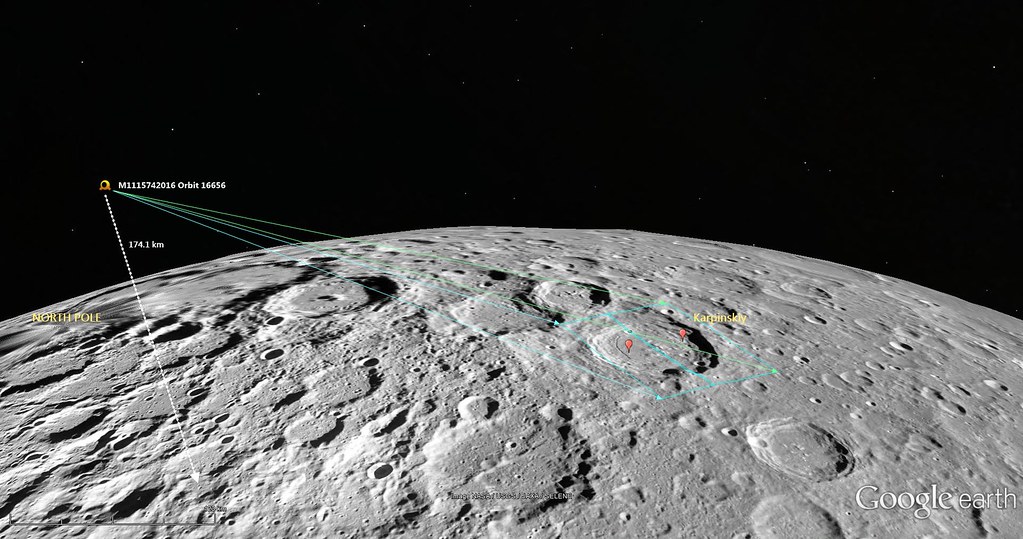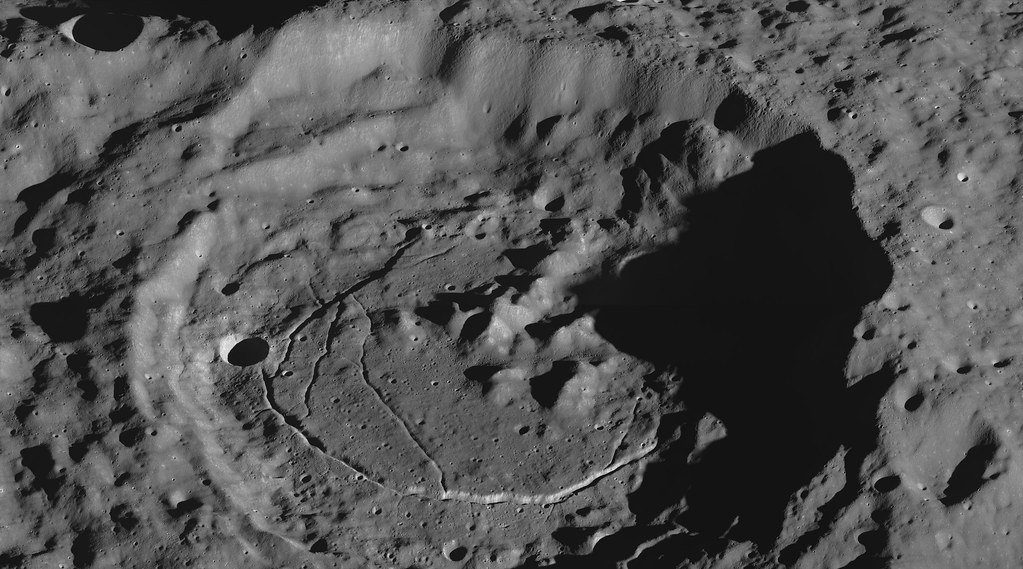 |
| LROC Narrow Angle Camera (NAC) oblique of the north floor of Karpinskiy crater, (91.4 km, 72.609°N and 166.801°E). Crater floor fractures abound,, concentric to the crater wall, a 6-km diameter impact crater on the floor and a disrupted jumble of central peaks. LROC NAC oblique mosaic M1115742016LR, orbit 16656, February 17, 2013; 82.48° incidence angle, resolution (maximum, and at full resolution) 2.42 meters per pixel, from 174.1 km over 77.81°N, 129.88°E) [NASA/GSFC/Arizona State University]. |
Raquel Nuno
LROC News System
Today’s Featured Image is an oblique image of the northeastern rim of Karpinskiy crater, a floor-fractured crater centered at 72.609°N, 166.801°E.
We can see wall terraces, superimposed impact craters of many sizes, and floor fractures. Fractures on the Moon are observed in different places. They can be seen as long linear rilles formed as the crust is pulled apart, and inside of craters, like in today’s Featured Image. How do these fractures inside the crater form? Lunar geologists propose two major formation mechanisms for crater floor fractures: intrusive magmatic activity and viscous relaxation. Intrusive magmatic activity is the process by which magma rises beneath the crater floor, causing excess pressure to build up, pushing the crater floor up; this extension causes it to crack. Viscous relaxation occurs as the lunar crust attempts to reach isostatic equilibrium, which it lost during excavation of large amounts of material during the impact. The the original curved floor flattens and is pushed up, causing it to fracture.
Gain an astronaut's eye view of Karpinskiy crater with the oblique NAC image, HERE.
Related Posts:
Numerov's Graben
Pull Apart - Grabens
It's the Moon's Fault
LROC News System
Today’s Featured Image is an oblique image of the northeastern rim of Karpinskiy crater, a floor-fractured crater centered at 72.609°N, 166.801°E.
We can see wall terraces, superimposed impact craters of many sizes, and floor fractures. Fractures on the Moon are observed in different places. They can be seen as long linear rilles formed as the crust is pulled apart, and inside of craters, like in today’s Featured Image. How do these fractures inside the crater form? Lunar geologists propose two major formation mechanisms for crater floor fractures: intrusive magmatic activity and viscous relaxation. Intrusive magmatic activity is the process by which magma rises beneath the crater floor, causing excess pressure to build up, pushing the crater floor up; this extension causes it to crack. Viscous relaxation occurs as the lunar crust attempts to reach isostatic equilibrium, which it lost during excavation of large amounts of material during the impact. The the original curved floor flattens and is pushed up, causing it to fracture.
 |
| The dynamics of LROC NAC observation M1115742016, full size image HERE. |
 |
| Thumbnail view of one version of the full-resolution LROC NAC mosaic, showing the interior and surrounding older crater within which Karpinskiy is nested. Various resolutions are available HERE. |
Related Posts:
Numerov's Graben
Pull Apart - Grabens
It's the Moon's Fault


1 comment:
Amazing!! Definitely lovely...enjoy almost every fine detail. You have to soo enjoy being available!! Masturbators
Post a Comment